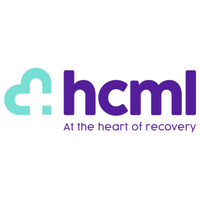How to address the physical wellbeing needs of different generations
Musculoskeletal (MSK) conditions continue to rank as the second highest reason for workplace absence.
Our own data demonstrates that the prevalence of MSK conditions increases with age, with 7% of employees aged between 19 to 29 experiencing MSK conditions, increasing to 11% in 30- to 39-year-olds and 14% for 40- to 49-year-olds.
While this is to be expected, the types of conditions vary between the generations. In younger employees, the main MSK complaint is lower back issues, accounting for 32% of MSK conditions. In contrast, knee-related issues are most common for the eldest cohort of workers. Job role may influence this to some extent, but this general trend can be found across multiple sectors.
Understanding age-related conditions can help you manage different interventions for different age groups to achieve a greater return on investment and experience.
Hybrid working
If your organisation supports hybrid working, you may have noticed an increase in MSK conditions. This is partly due to employees having a poor at home workstation set up, where it is much harder to assess and manage health and safety compliance.
Figures from the ONS last year show that hybrid working was more common for employees aged 30 to 49, and those at the higher end of this age bracket (45 +) experienced significantly higher rates of MSK issues than other age brackets. Employees aged 16 to 34, who were less likely to work from home, had significantly lower rates of work-related MSK conditions .
Although we have seen that MSK conditions increase with age, it’s interesting to see a rise in MSK conditions for those working from home.
Whilst this older generation may feel they have heard it all before, employers must continue to highlight and address potential risks amongst an age group who are more vulnerable to MSK conditions. Remote assessments and encouraging employees to take responsibility for increasing their physical activity should be incorporated into an overall wellbeing programme.
Underlying causes and contributory risk factors
Identifying and tackling physical wellbeing issues is trickier if we don’t understand what causes or contributes to MSK issues in the first place.
Exercise and diet
Exercise and diet can have a profound impact on MSK conditions. The less weight a person is carrying, the less strain on their joints. The more regular exercise, the less pain, stiffness and inflammation in the joints and muscles.
Age also determines the impact of our diet and exercise. As we get older, our metabolic rate decreases, meaning it takes more energy to burn calories.
While these factors may seem an obvious thing to address, doing so in the workplace is challenging. Our data has shown that 69% of employees with MSK conditions are overweight and 92% did not meet recommended activity guidelines.
It comes down to education and providing age-relevant resources that employees can easily use in their daily lives. Guided self-management is often effective in improving health and preventing repeat occurrences, but it needs to be easy for people to incorporate in their working lives and speak to the different needs of all ages.
Attitudes
A slightly surprising risk factor in the prevalence of MSK conditions, is the person’s attitude, beliefs and fears about their condition. We found that 58% of people with MSK conditions present limiting attitudes and fears in relation to their condition.
As we get older, it’s easy to fall into a way of thinking that puts these conditions down to our age and feeling less positive about the chances of recovery than someone in their 20s or 30s would.
Education and self-management are important for your older cohort of workers, to help them change behaviours and effectively manage their own symptoms. It’s also important for your younger employees, who can begin to build resilience and understand the things they can do to prevent MSK conditions as they get older.
Data
Of course, all of these would not be identifiable or addressable without data on your workforce. This means extracting relevant information, integrating a host of wellbeing data from different sources to spot patterns and identify trends, and then meaningfully interpreting this to create a strategy that caters for all ages.
Although we’ve seen positive steps towards a boost in employee physical wellbeing support recently, with the government’s announcement of a £400m support package to improve mental health and MSK resources for workers and encouraging the over 50s back into the workplace, it’s unclear how this will work. Simply providing reactive solutions that do not get to the root cause of the problem will do little to reduce the repeated cycle of MSK sickness absence. Equally, a ‘blanket approach’ to physical wellbeing is not enough. Understanding the varying MSK complaints across different age groups and addressing the underlying causes is vital to improving MSK ill-health.
Supplied by REBA Associate Member, HCML
HCML is a health and wellbeing provider, offering integrated and personalised healthcare solutions.








